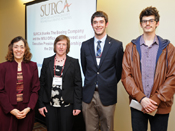Representation in video games still falls short

When it comes to women, the video game industry still hasn’t quite figured it out.
This year’s Electronic Entertainment Expo or “E3,” the annual video game industry trade show, just wrapped up with its fair share of controversy. Ubisoft’s creative director, Alex Amancio, drew harsh criticism after stating that their latest “Assassin’s Creed” title’s co-op mode would not feature female assassins.
This is but one example of a much bigger problem in the industry as a whole.
A study of video games referenced by David Leonard, professor and chair of the Department of Critical Culture, Gender, and Race Studies at WSU, found that 64 percent of game characters were male, while 17 percent were female, fewer than even non-human characters, who came in at 19 percent. The majority of characters were white, and, of the black men seen, more than 80 percent of them showed up as competitors in sports-oriented games. Leonard found black women had an even narrower role: 90 percent of black female characters were props, bystanders or victims.
Some may argue that games are overwhelmingly white and male because studios are simply appealing to their target demographics; white males buy their games, so they need to target white male gamers. Except the demographics aren’t nearly as skewed in one particular direction.

